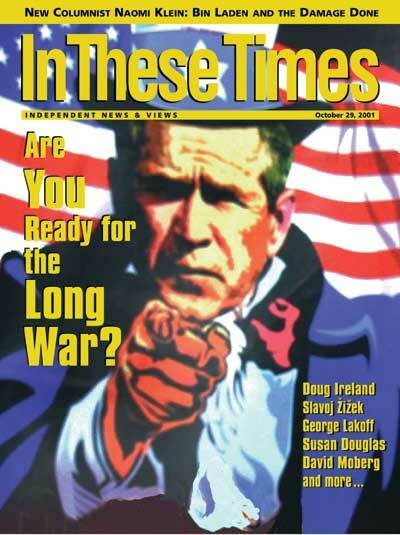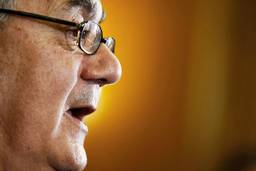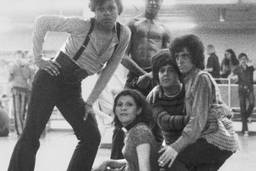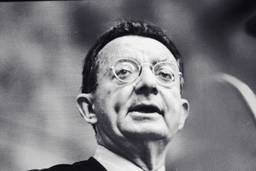Ready Freddy?
Ferrer wins NYC mayoral primary but faces a tough runoff against Mark Green.
Doug Ireland
The extraordinary showing by Bronx Borough President Fernando “Freddy” Ferrerwho topped the Democratic field of four mayoral candidates with 35 percent of the vote to Public Advocate Mark Green’s 31 percentwas a testament to the new ethnic reality in the Big Apple, which is now majority non-white. Ferrer, a Puerto Rican from the city’s mostly Hispanic northernmost borough, had pinned his hopes on creating a viable on-the-ground Black-Hispanic coalition to take advantage of the 2000 Census’ demographic revelations. It worked. Turnout among white voters was driven down by the effects of the terrorist attacks, while Hispanic and black voters came out in droves. Complete returns were not available at press time, but exit polls showed that, for the first time, the Hispanic vote equaled that of blacks: 23 percent of the total. From the beginning of the year, it was Greena one-time Nader’s Raider with a liberal reputationwho was the putative front-runner, although there had been little voter interest in the dull race until after Labor Day. But in the final week of campaigning, Ferrer had picked up momentum: He won the endorsement of politically potent SEIU Health Workers Local 1199, whose huge, mostly black and Hispanic membership forced the union’s boss, Dennis Rivera, to take 1199 into the Ferrer camp.
And when the Rev. Al Sharpton got out of jail after serving three months for protesting U.S. bombing of the Puerto Rican island of Vieques, he endorsed Ferrer, who campaigned arm-in-arm with him in the black community, where Sharpton was greeted as a hero by wildly enthusiastic crowds. Ferrer and Green were neck-and-neck in the opinion polls going into September 11. But in the wake of the Twin Towers disaster, all candidates suspended campaigning for the rescheduled primaryNew Yorkers were in mourning in a city in chaos.
Green is now paying for having made the frontrunner’s classic mistake: make no waves. For six months he sat cautiously on his lead and his huge name recognition (he is a former co-host of CNN’s Crossfire and adept at getting press coverage). Green tap-danced to the centeropposing parole, for example, and refusing to say, as Ferrer did, that the four cops who riddled an innocent black man, Amadou Diallo, with 41 bullets on his own doorstep, should be kicked off the force. And Green made his endorsement by Bill Bratton, Mayor Rudy Giuliani’s popular first police commissioner, a centerpiece of his campaign, adopting law-and-order-tinged rhetoric to appeal to so-called Giuliani Democrats. Green’s newly minted centrism and his caution drained enthusiasm for him among his traditional progressive base.
At the same time, Ferrer outflanked Green on his left by positioning himself as the “anti-Giuliani,” campaigning as the spokesman for “the other New York,” those left out of the city’s economic boom.
xxFerrer, however, is a pure product of Bronx Democratic machine politics who has been all over the lot on issues. When Ferrer ran for mayor four years ago, he campaigned to the right, coming out in favor of the death penalty after having opposed it for yearsthis year, he favored a “moratorium.” xxFurthermore, white turnout was dampened by the antics of “Rudy the Rock” (as French President Chirac dubbed the term-limited mayor), who signaled his availability for another four years if a way could be found to overturn term limits by legislative action. Even though this would have required approval by the state legislaturewhose Democratic Speaker, Sheldon Silver, hates Giulianiwould certainly have blocked it, ignorant media hype made a chunk of white voters decide to “wait for Rudy” and stay home.
As Green and Ferrer head toward an October 11 runoff, suddenly it’s a horse race. Ferrer again has momentumthe day after the voting, he picked up the endorsement of the most conservative of the four Democratic mayoral candidates, City Council Speaker Peter Vallone, who got 20 percent of the vote. Ferrer’s problem is that only 7 percent of white voters supported him, according to exit polls, which also showed him losing to Green 51 to 40 percent in the runoff. But Ferrer has a powerful new campaign theme: “I rebuilt the Bronx, I can rebuild New York” after the attacks (even though Ferrer, in reality, had little to do with the Bronx’s revival). There’s panic in the Green camp; says a top Green strategist, “Mark has to hug and kiss Bill Bratton like they were on their first date and hope whites are frightened enough of Al Sharpton to come out.”
But if Green maintains his centrist course, his liberal base may stay home. And Ferrer may pick up the support of the powerful United Federation of Teachershe’s made raising teacher salaries a central issue, and the UFT hates Green.
Green may have committed a major blunder in agreeing to Giuliani’s latest maneuver to stay in office. Rudy asked all mayoral candidates to join him in asking the legislature to extend his term until April. Ferrer said no, but Green said yesmaking him look even more opportunistic. This could lose him not only some of the 30 percent of the black vote Green got in the primary, but, by making him look weak, also nibble away at the white vote. Term limits were passed twice by the voters, and Rudy’s chutzpah in scheming to get around them is dissipating his “hero” imageit looks like a coup, and many resent it. Rendezvous October 11.








